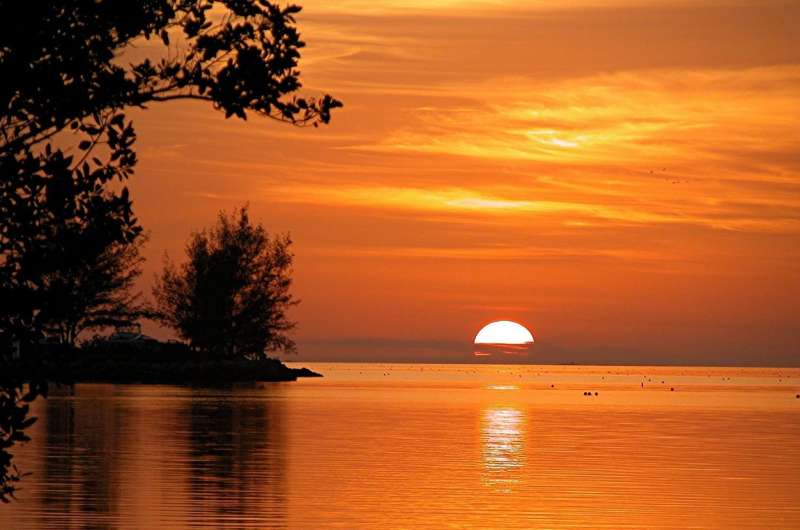Six things to know about Florida red tide

Gov. Rick Scott has declared a state of emergency due to Florida red tide in seven counties, including Charlotte, Collier, Lee, Manatee, Monroe, Pinellas and Sarasota counties. Florida red tide blooms have struck the state's west coast, leaving discolored, smelly water and dead wildlife in its wake. The governor's actions mobilize available funding and resources to address the impacts of the harmful algal bloom.
FIU experts Kathleen Rein and Jeremy Kiszka offer insight on the sudden and massive growths of Karenia brevis— the microscopic algae causing the Florida red tide.
- Florida red tide isn't red. K. brevis, the algae blooming throughout Florida's west coast, is actually green or brown. Other types of algae made up of red pigments cause red tide. So, to distinguish K. brevis blooms from red tide blooms, researchers call them "Florida red tide."
- Red tide shouldn't be confused with a blue-green algae bloom. Blue-green algae, which is actually a type of bacteria, produces harmful blooms when it comes into contact with discharge from Lake Okeechobee. Cyanobacteria can cover Florida's beaches along the Atlantic coast with foul-smelling, thick, green muck.
- Nutrients fuel red tide. Red tide begins as algae in the ocean. They are carried to shore by currents and wind. Once closer, they can come into contact with nutrients from agricultural runoff, including fertilizers and pesticides, producing a harmful bloom referred to as red tide.
- Red tide affects wildlife. Blooms suck up all the oxygen in the water. They also produce a toxin that can cause gastrointestinal and respiratory damage or death in marine wildlife, including fish, turtles, dolphins, manatees and whales.
- Red tide also affects people. It can cause respiratory irritation, as well as eye, nose, skin and throat irritation, to those who live along or visit an infected beach. It also impacts the state's economy, including the tourism, recreational fishing and commercial fishing sectors.
- Red tide outbreaks have been happening for a long time. Outbreaks were first recorded in Florida's west coast when European explorers arrived there in the 1500s. Blooms typically occur in the late summer and can persist into the late fall or early winter months.
Provided by Florida International University
















